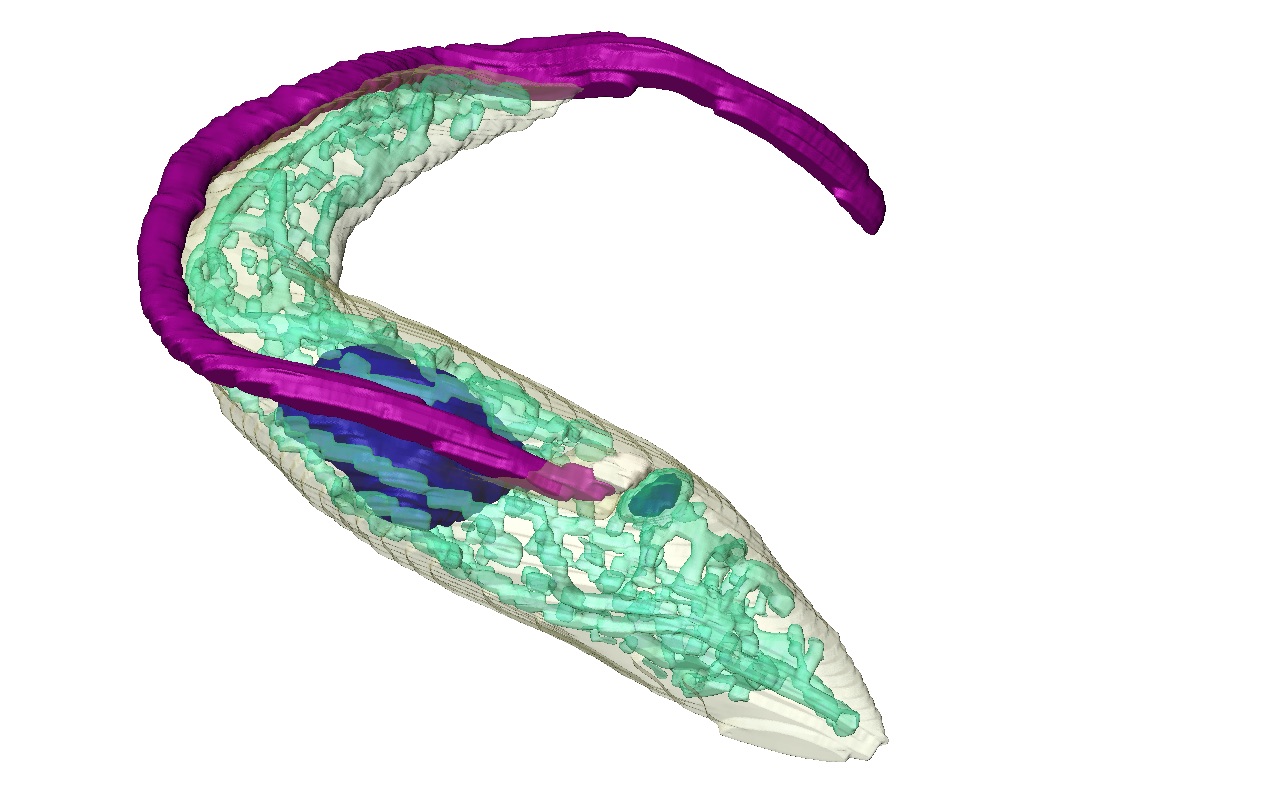How complex cells originated
Mitochondria are the “power plants” of complex cells. In order to provide the cell with energy they need protein building blocks, which are imported from the outside. Over billions of years the “protein import machines” necessary for this process have developed differently than previously assumed, as biochemists in Bern have discovered. This also casts a new light on the evolution of complex cells.
Mitochondria are separated from the rest of the cell by two membrane layers. In order to produce energy, mitochondria require protein components that must be imported across the two membrane layers. Two “import nano machines” located in the outer and inner membrane layer are responsible for this process. Now a research group led by André Schneider from the Department of Chemistry and Biochemistry at the University of Bern, in cooperation with a University of Freiburg group led by Bettina Warscheid, has discovered that the composition of these nano machines is quite different in unicellular parasites when compared to humans.
As Schneider had already discovered in an earlier study (cf. media release from 26 March 2015), the parasites – trypanosomes – have “reinvented the wheel”, in a manner of speaking. In the new study they show that this not only applies to the “import machine” in the outer membrane of mitochondria, but also to the one in the inner membrane, whose unusual composition the research team has now identified. The assumption that the import nano machines are structured the same in all mitochondria, regardless of whether unicellular organisms or humans, is no longer correct. “Our ideas of how mitochondria evolved therefore need to be modified”, says Schneider. The study has now been published in the journal “Nature Communications”.
Like petrol and electric engine
The mitochondrion was originally a simply structured bacterial cell that was incorporated by a larger cell about two billion years ago and then converted into a cell compartment. “In addition to the emergence of life itself, this transformation process was arguably the most important event in evolution”, says Schneider. It formed the foundation for the development of complex cells, of which all plants and animals as well as many microorganisms are made. “Humans also consist of complex cells. So ultimately our study touches on the question: where do we come from”, explains Schneider. A central prerequisite for the emergence of mitochondria and therefore for the evolution of complex cells was the development of an efficient protein import machinery. Previous hypotheses assumed that such a system developed once, and was after that only adapted slightly to the living conditions of respective organisms. However, the new data show that this is not the case. These import nano machines are composed of 15 different proteins in both trypanosomes and humans, but with the exception of three proteins these constituents do not exhibit any similarity whatsoever with each other.
This fact shows that except for three basic components the import system was reinvented in the trypanosomes. “The situation is therefore more or less comparable with the petrol engine and electric engine, which in principle both have the same function, but were invented independently of each other and are therefore also structured in a completely different manner”, says Schneider. This discovery now demonstrates that the first complex cell presumably had only a simple import system, whose evolution to highly developed import nano machines was a lengthy process. So today’s efficient import systems consisting of many different modules have evolved later than originally assumed, after an initial “speciation” of complex cells had already occurred.
Useful in fighting sleeping sickness
Trypanosomes are not only an important model system for basic research, but also of clinical importance as pathogens causing sleeping sickness, which is fatal if untreated. “The newly discovered protein import system is absolutely essential for the survival of trypanosomes. “Since it is structured very differently than the system in human mitochondria, it could be suitable as a target structure for chemotherapy against sleeping sickness”, says Schneider. Therefore, it should be possible to find substances that inhibit the transport system of trypanosomes, without influencing that of human mitochondria.
Publication details:A. Harsman, S. Oeljeklaus, C. Wenger, J. L. Huot, B. Warscheid and A. Schneider. The non-canonical mitochondrial inner membrane presequence translocase of trypanosomatids contains two essential rhomboid-like proteins, Nature Communications, 19 December 2016, doi:10.1038/ncomms13707 |
2016/12/19

